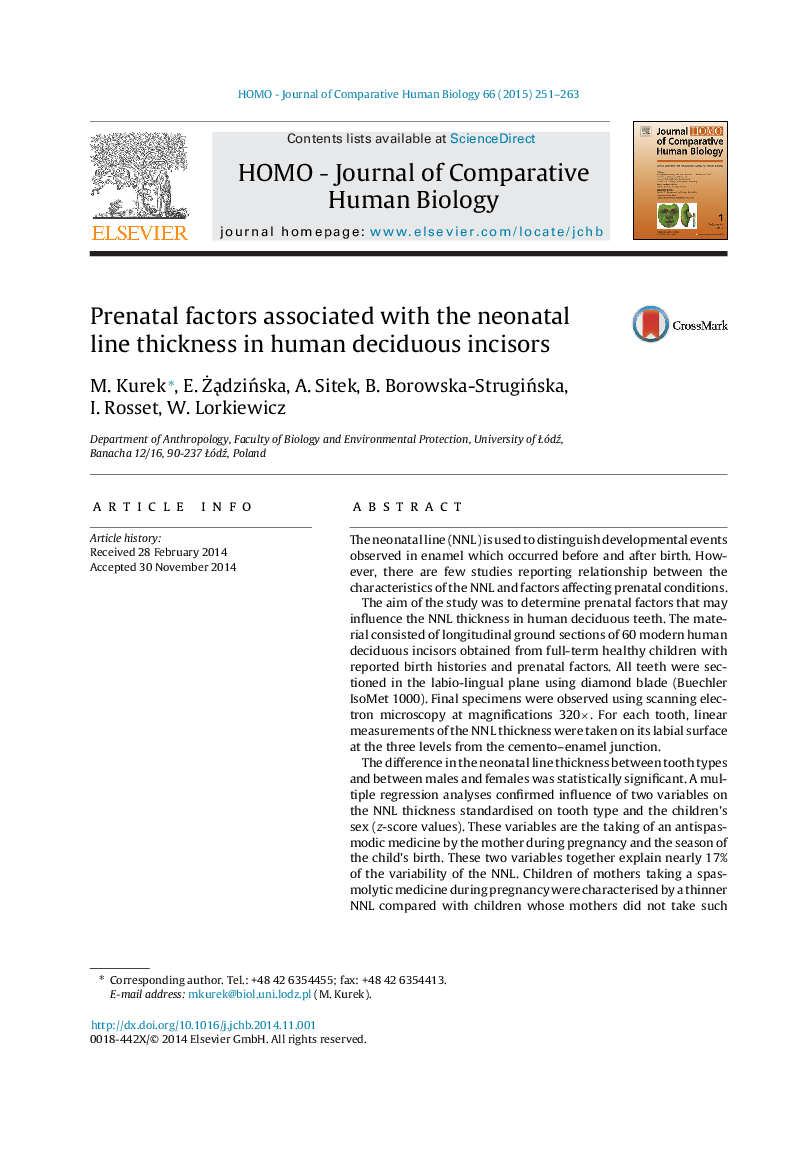| کد مقاله | کد نشریه | سال انتشار | مقاله انگلیسی | نسخه تمام متن |
|---|---|---|---|---|
| 100114 | 160966 | 2015 | 13 صفحه PDF | دانلود رایگان |
The neonatal line (NNL) is used to distinguish developmental events observed in enamel which occurred before and after birth. However, there are few studies reporting relationship between the characteristics of the NNL and factors affecting prenatal conditions.The aim of the study was to determine prenatal factors that may influence the NNL thickness in human deciduous teeth. The material consisted of longitudinal ground sections of 60 modern human deciduous incisors obtained from full-term healthy children with reported birth histories and prenatal factors. All teeth were sectioned in the labio-lingual plane using diamond blade (Buechler IsoMet 1000). Final specimens were observed using scanning electron microscopy at magnifications 320×. For each tooth, linear measurements of the NNL thickness were taken on its labial surface at the three levels from the cemento–enamel junction.The difference in the neonatal line thickness between tooth types and between males and females was statistically significant. A multiple regression analyses confirmed influence of two variables on the NNL thickness standardised on tooth type and the children's sex (z-score values). These variables are the taking of an antispasmodic medicine by the mother during pregnancy and the season of the child's birth. These two variables together explain nearly 17% of the variability of the NNL. Children of mothers taking a spasmolytic medicine during pregnancy were characterised by a thinner NNL compared with children whose mothers did not take such medication. Children born in summer and spring had a thinner NNL than children born in winter. These results indicate that the prenatal environment significantly contributes to the thickness of the NNL influencing the pace of reaching the post-delivery homeostasis by the newborn's organism.
Journal: HOMO - Journal of Comparative Human Biology - Volume 66, Issue 3, June 2015, Pages 251–263
